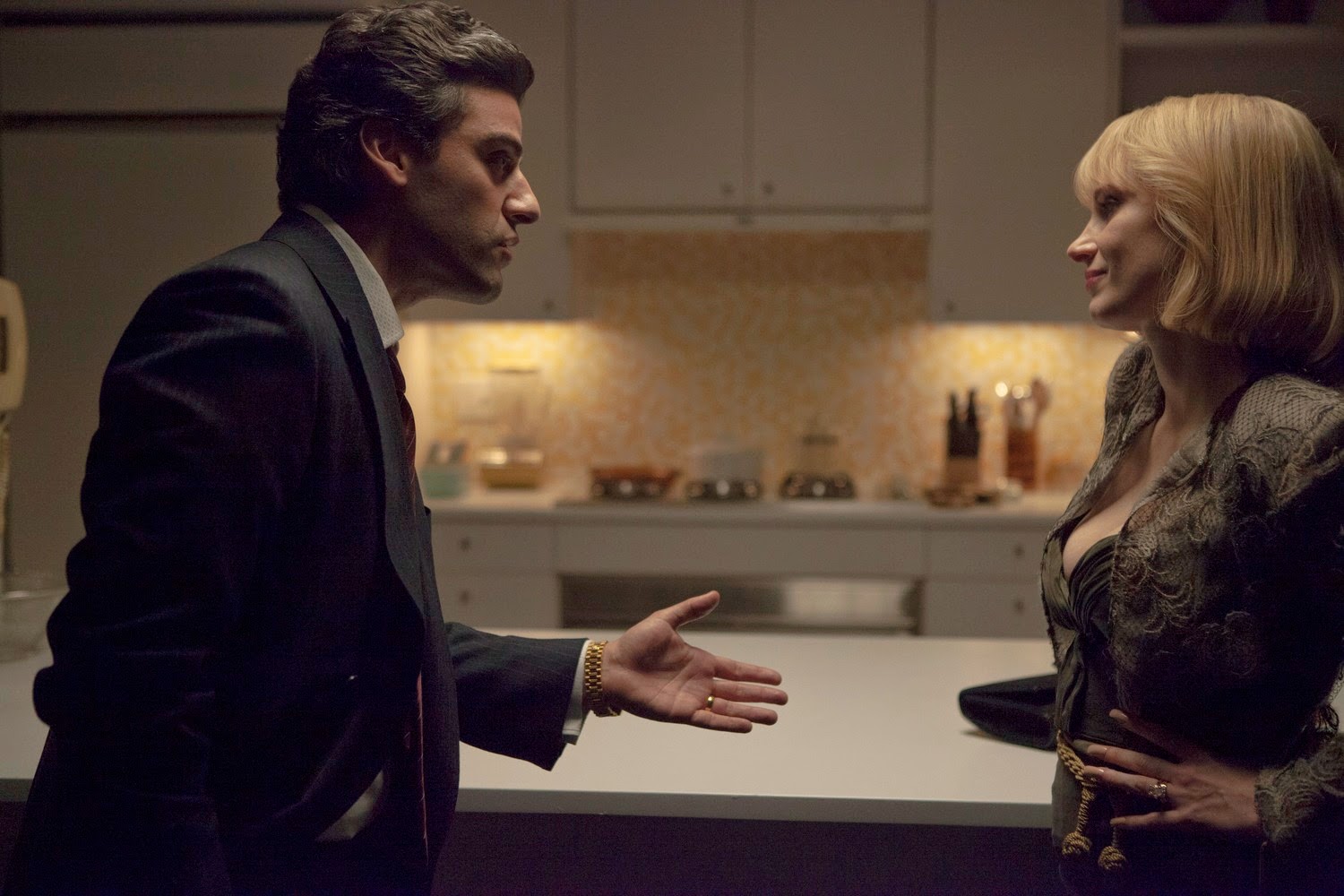

A title like “A Most Violent Year,” without further information, might lead you to expect (as I did) raging war scenes, intense, blaring shootouts and cacophonous dialogue. Yet, the violence that existed was so silent and so subdued, that it felt real, very far from your average action-packed blockbuster. Set in New York in 1981,“A Most Violent Year” carefully depicts failure of the American Dream by following the life of a poor-immigrant-turned-rich-oil-guy as he protects his family and business during New York’s most violent year.
Successful business man Abel Morales (played by Oscar Isaac) believes he is living proof of the rags-to-riches narrative, the good man, the moral character so deeply invested in the idea that one can come from nothing and achieve it all without breaking the rules. He lives up to his first name, and last name, as serious, a straight character convinced good will always win. But in his quest to acquire an especially critical and expensive piece of land for his company, his truckers and salesmen become increasingly vulnerable to hijacking and attacks, the D.A. begins investigating his company, and money begins to be a problem. Morales takes it upon himself to find those that were stealing from him and attacking his workers, and while he believes he is well in control of the legality of his company’s actions, his femme-fatale-like wife and secretary (played by Jessica Chastain), and business partner (played by Albert Brooks) disregard the rules and go behind his back to ensure the success of the company.
As a self-envisioned hero of the immigrant community, Morales projects his belief in the American Dream onto those around him. A young immigrant truck driver named Julian looks up to Morales, his boss, as the model of a man he may one day become. However, after being ushered back to driving post-recovery of a violent attack, Julian loses the faith he once had of “making it.” Morales’s story progresses with Julian’s; as the plot evolves, they both recognize that maybe the American Dream might not be true. As the name “Abel,” might predict, just moments after Morales realizes the fraud in his company and still obtains the property, the tangibility of the pure American Dream for Morales dies with Julian’s suicide.
Except for a shoot-out scene on a traffic-jammed freeway, the film remains quietly intense, with sparse dialogue and conversations in dark, shadowed settings. It’s one of the few films I’ve seen recently that relies on the composition of the frame just as much as dialogue, just as much as action — the frame shots match the stark, powerful mood. Though the director used a variety of shots, camera movement during a scene is minimal, and except for small spurts of action, actors often walk out of the frame before the scene changes. For me, the cinematography and sparse, isolated incidences of action are what make the film powerful and the content relevant.
I’ve now seen “A Most Violent Year” twice. Out of the many movies I have watched lately, I would very much recommend this one, especially if you are feeling pensive. I see it as a polar opposite from ”Chef,” a light-hearted comedy and family drama about food trucks, and very different (less heavy and depressing) than ”Whild”, the story of an ex-heroin addict hiking her way to coming to terms with her mother’s early death. “A Most Violent Year” lies somewhere between the two. What the film lacks in direct, fast-paced, entertaining action, it makes up for by making the viewer think. Some lines might make you chuckle, and one scene in particular (as Chastain ushers children out of a birthday party held at her house, handing each a party favor, she lets investigative police in) adds some dark humor. Each scene of the film is not exactly exciting or engaging, but as a whole, it may reveal a common struggle — that it may be impossible to righteously pull yourself up by your bootstraps and make it out on top without help. Good might win — if bad is on your side. Overall, I appreciate the stark realism of the film, and I predict it’ll be one I watch a few more times.